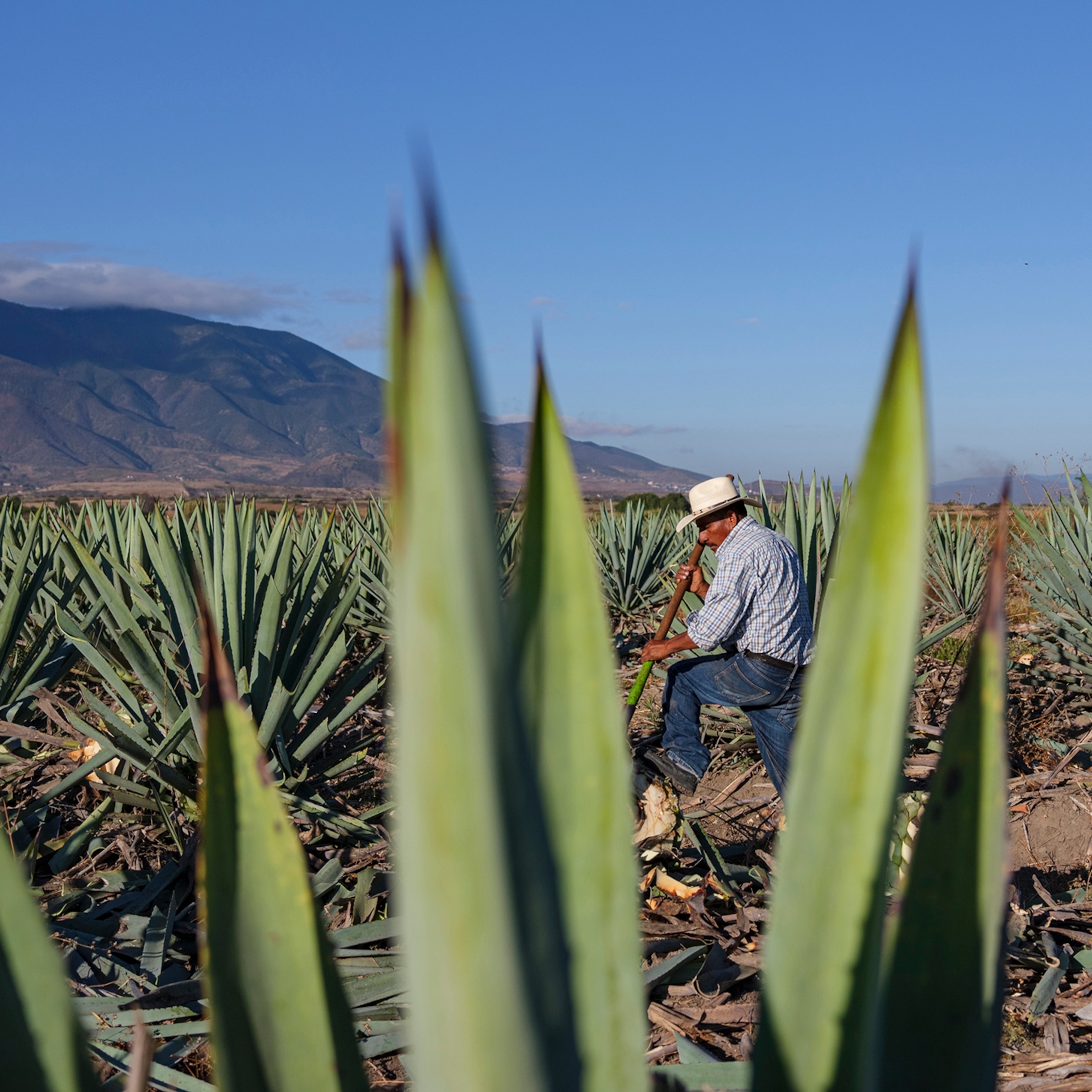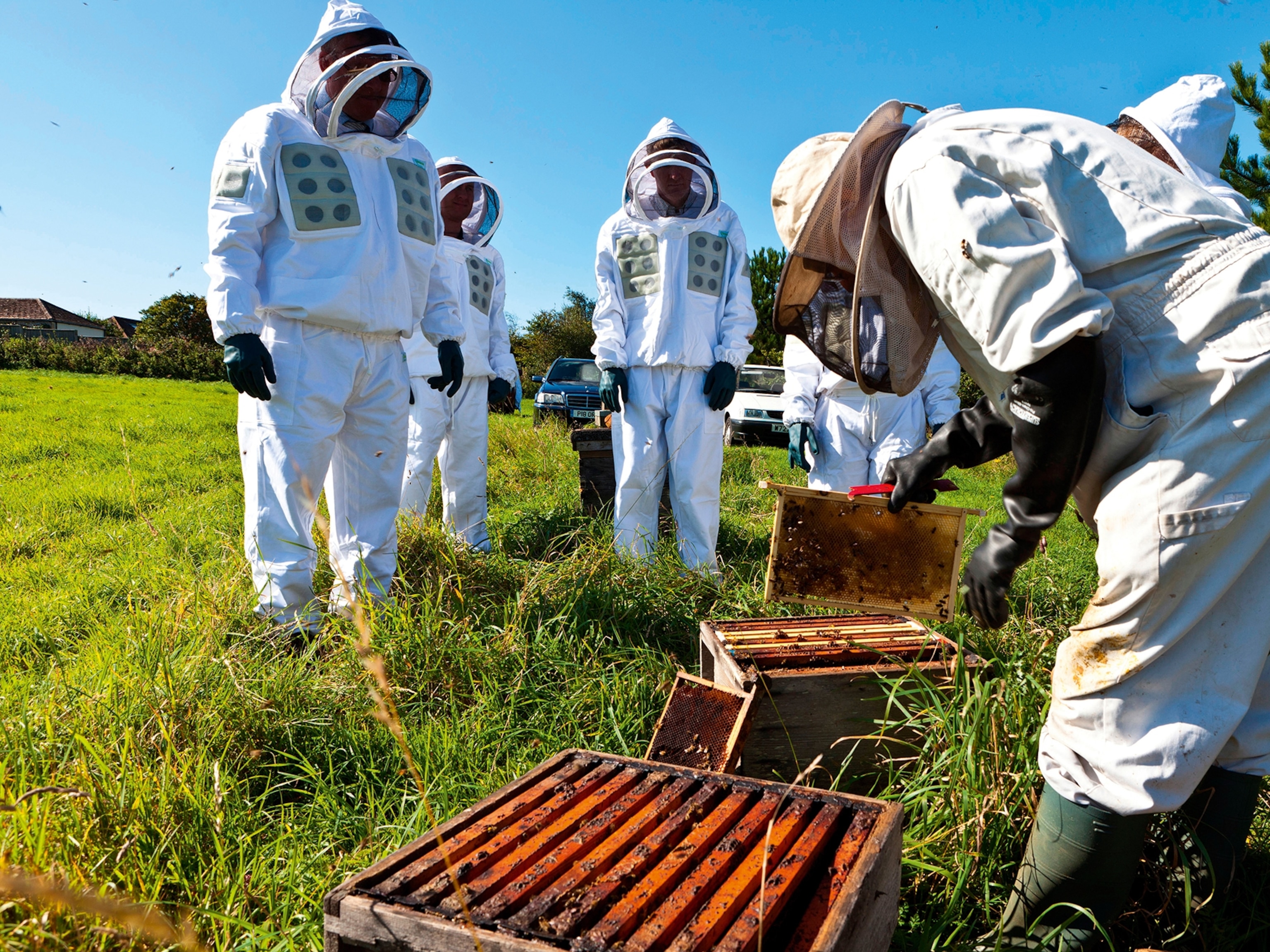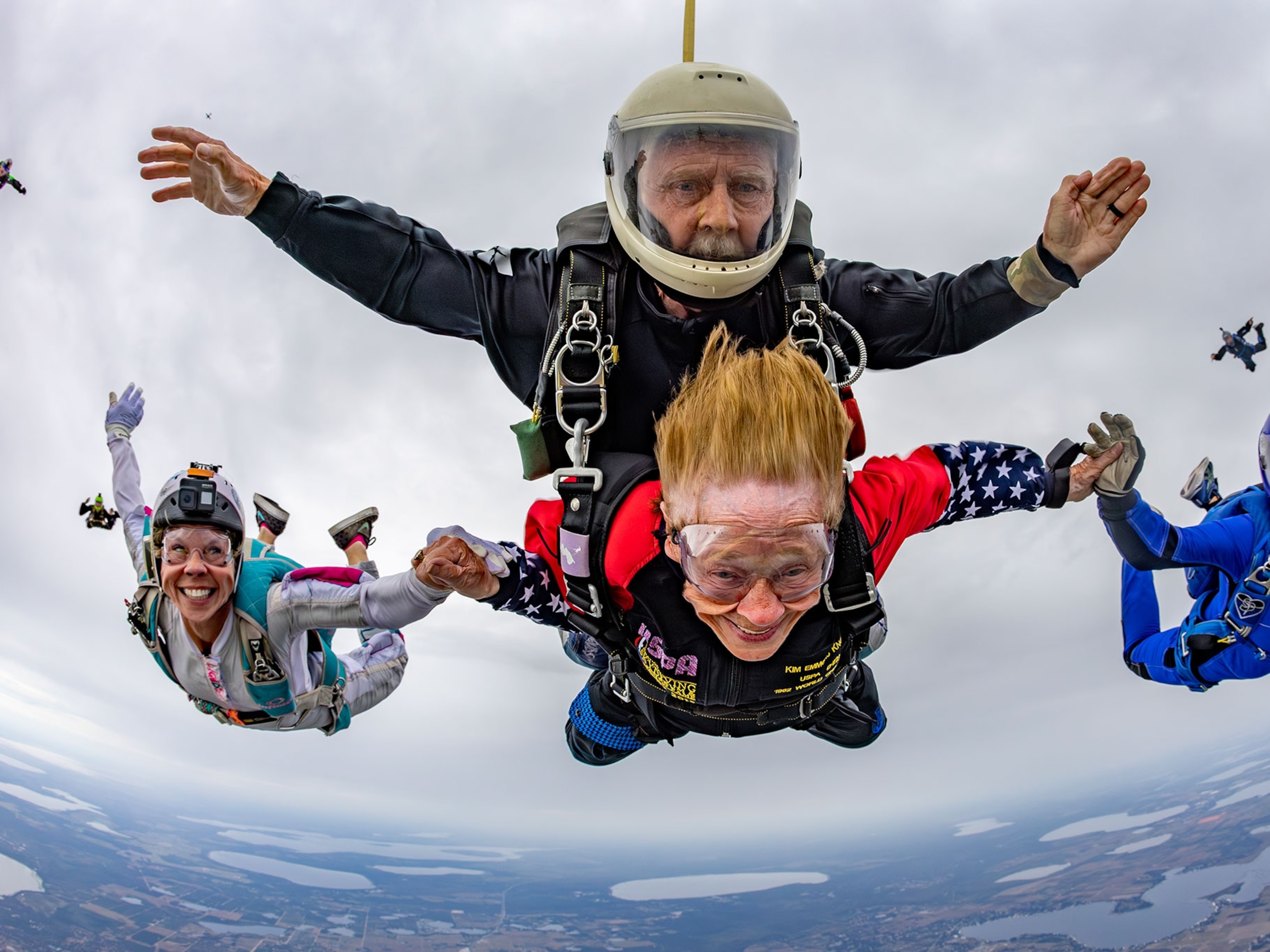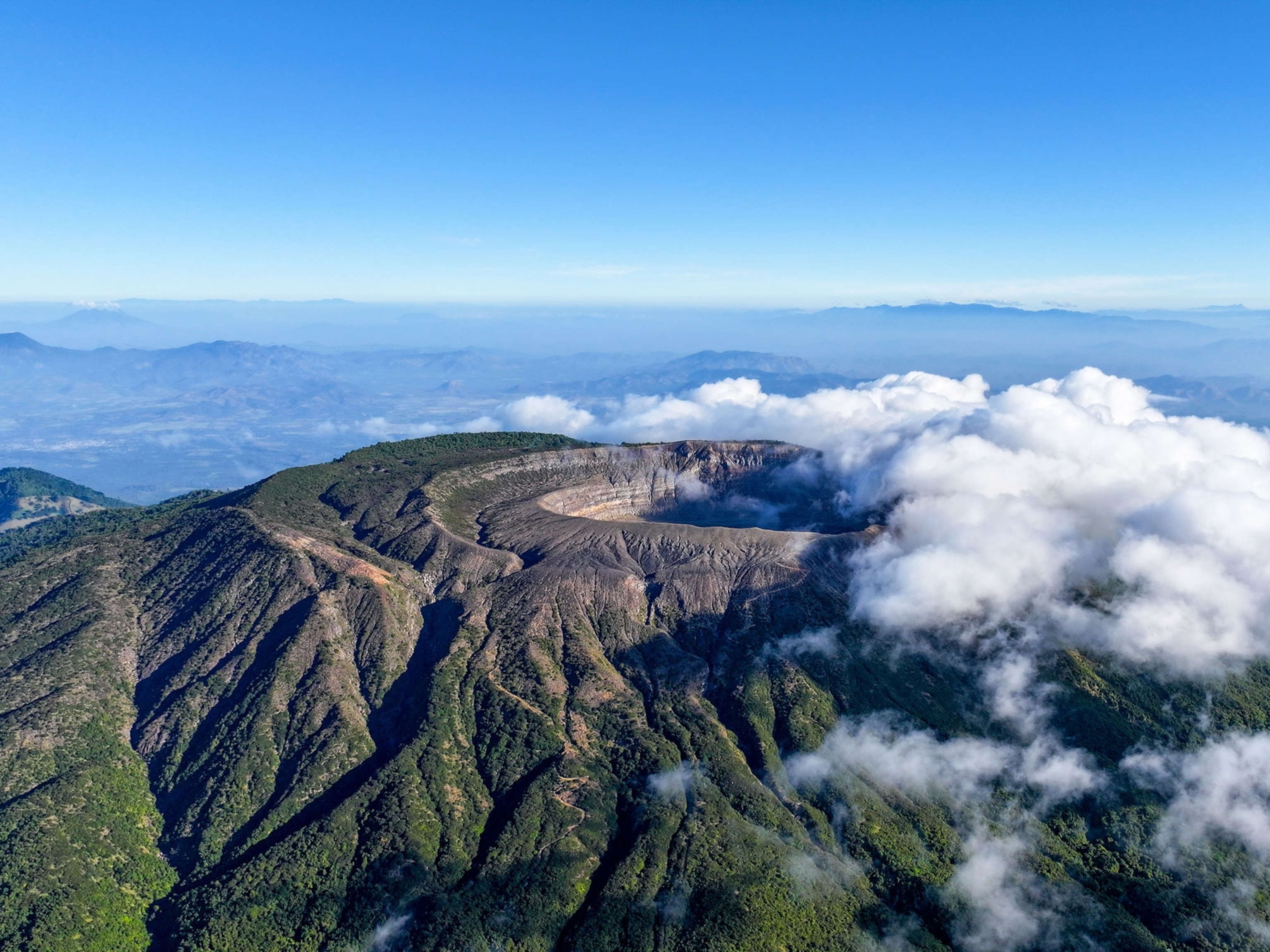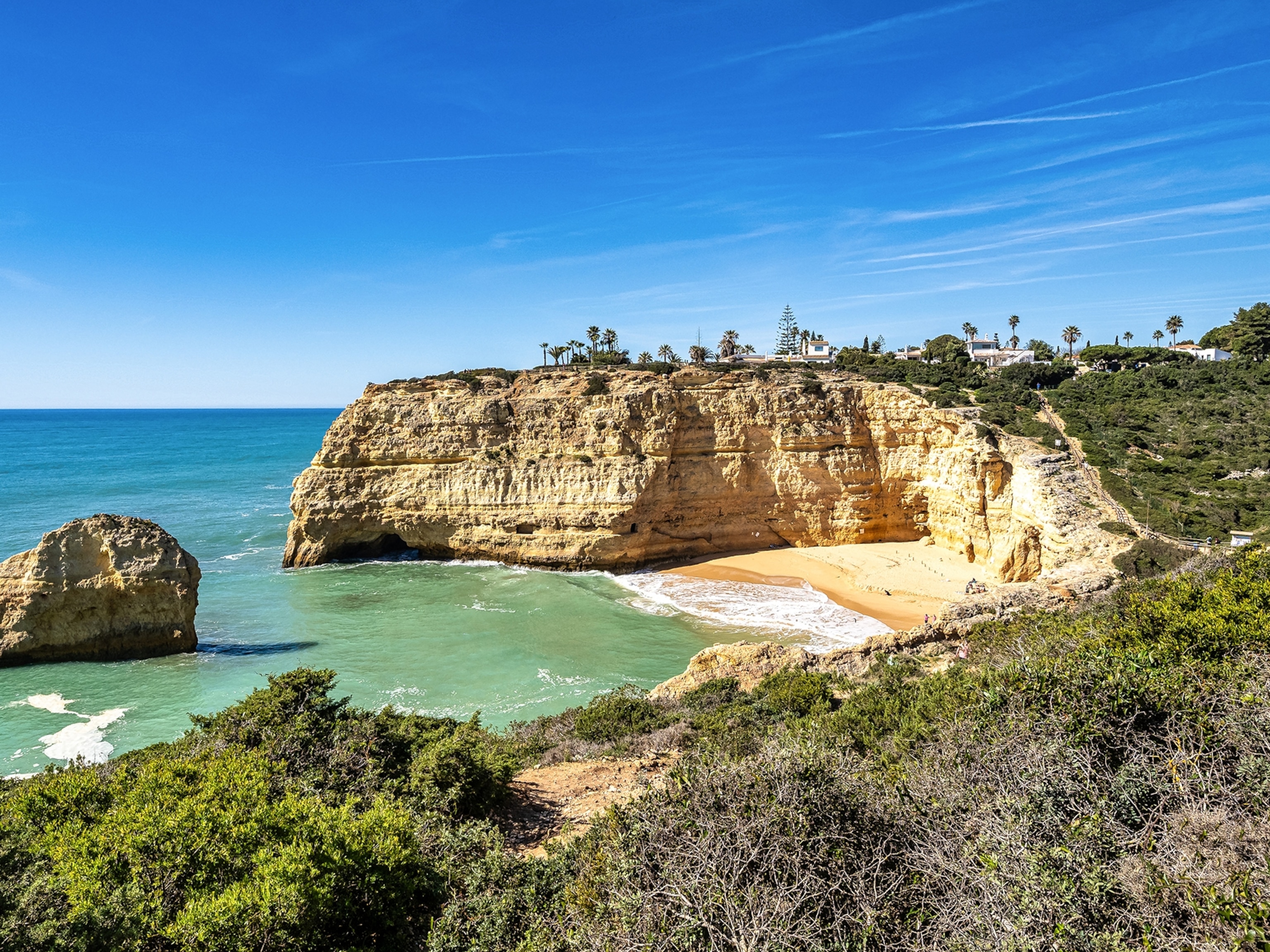Watch this Dramatic Rescue of a Fallen Big Wave Surfer
Brazilian professional surfer Pedro “Scooby” Vianna takes an epic spill from his board during a storm in Nazaré, Portugal.
In late February, the best big wave surfers in the world caught wind of a storm headed for Nazaré, Portugal—a surfing destination only recently recognized for producing the world’s most awesome and powerful waves. The sport of big-wave surfing can sometimes require dropping everything and traveling around the world at a moment’s notice.
Pedro “Scooby” Vianna, a professional surfer from Rio de Janeiro, Brazil, was at Carnival on February 26 with his wife when he heard about Ewan—a big storm building off the coast of Greenland and moving toward Europe. Surf forecasters predicted it would be the biggest swell of the year. Scooby was on a flight to Portugal the next morning.
“I was anxious and preparing myself for the Carnival, but I had no doubt once I saw the forecast,” Scooby said.
By February 28, Scooby was tearing down the tide at 45 miles an hour on his rattling surfboard. There was a 70-foot mountain of water avalanching behind him.
The seething spume nipped him from behind and sent him bombing into the fray in a violent back flop.
Scooby’s friend and fellow Brazilian, Lucas "Chumbo" Chianca, rode in on a jet ski to pick him up before the next monster set rolled in. Scooby grabbed ahold of a rear tow board latched to the jet ski, and they sped away in an attempt to outrun the next wave. Chumbo soon lost control in the choppy whitewater, and the jet ski capsized near some dangerous rocks. Another massive wave was right behind them.
Two people now needed a rescue.
For Scooby, this is part of the thrill of riding giants. “Having death so close makes me feel very alive,“ he says. “The fact I can die at any moment when I'm surfing big waves makes me feel close to God.”
Slaying One Hundred-Foot Dragons
Scooby wasn’t the only professional surfer in Nazaré last month. Many of the world’s best big wave surfers, including Garrett “G-Mac” McNamara, also jetted to Portugal upon hearing the forecast.
McNamara, an American surfer from Hawaii, put Nazaré’s Praia do Norte (the North Shore) on the map when he surfed a 78-foot wave (from trough to crest) in November 2011. The achievement bested the prior world record by one foot, and landed McNamara in the Guinness World Records. He also won the illustrious XXL Biggest Wave Award, an annual yearlong contest run by the World Surf League.
In 2013, McNamara returned to Nazaré and caught a juggernaut. During one of the area’s most epic swells, a wave formed into an impossibly large, pyramid-shaped mountain of water. McNamara was ready with his surfboard, carving a beautiful, plumb line from the wave’s apex directly down its broad, dark face.
Afterward, a photo of McNamara’s achievement circulated the media. Some surmised he had just surfed a 111-foot wave—a figure that still awaits official verification. Meanwhile, McNamara abided by the “surfer’s code” by not discussing the size of his wave and letting others do the talking instead.
There’s big money to be made in surfing the next biggest wave—from book deals and endorsements to the World Surf League’s Big Wave Awards, which could earn a surfer up to $75,000 for the Ride of the Year award.
More than anything it’s about the thrill of chasing the big one. For Scooby, McNamara, and about a dozen other surfers in Nazaré, the question was clear. Would Storm Ewan—considered stronger than the 2013 storm that spawned McNamara’s 111-foot wave—produce the mother of all waves?
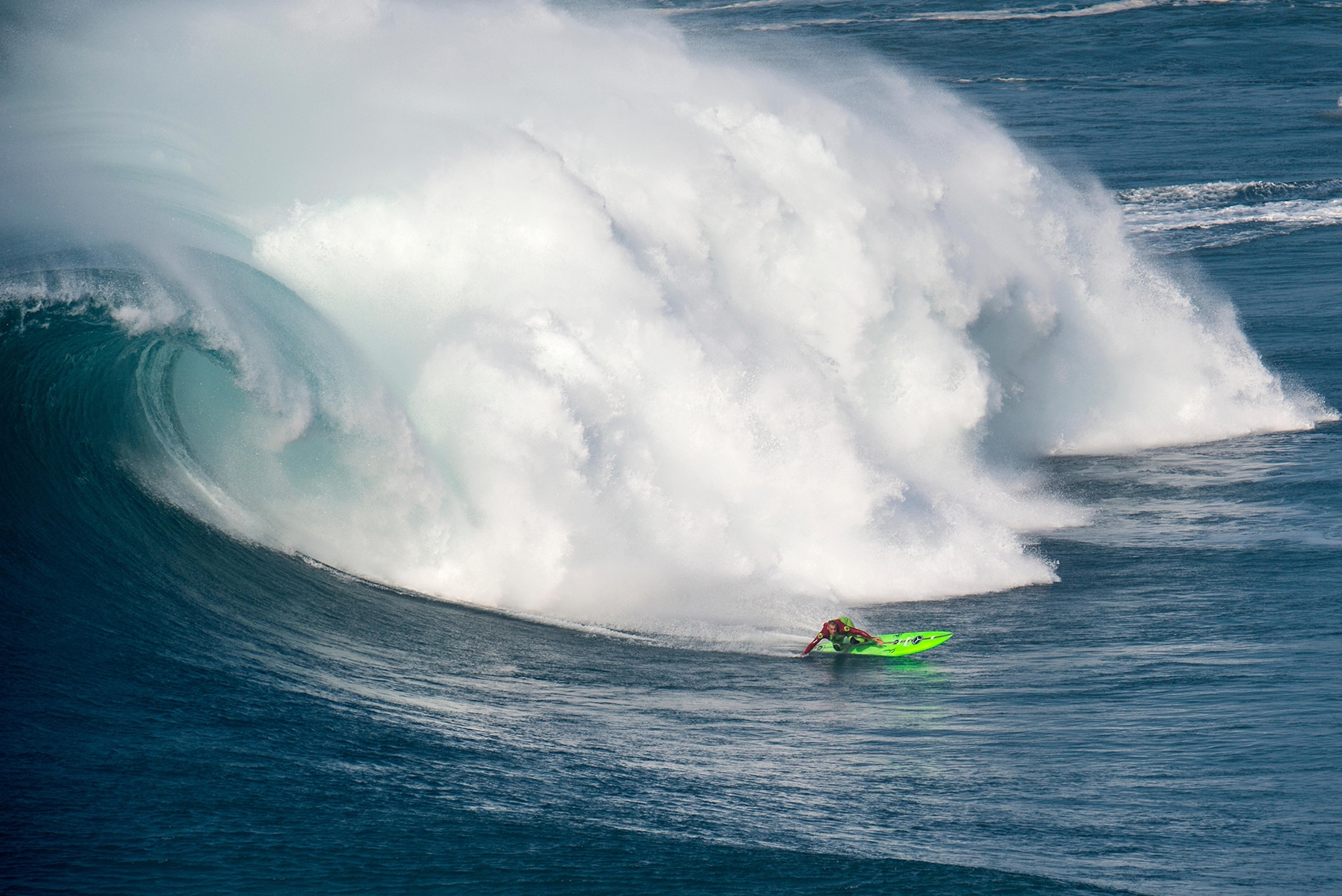
The Birth of a One Hundred-Foot Wave
Nazaré’s biggest waves are the product of two occurrences: Annual weather patterns and Nazaré Canyon, an undersea abyss that stretches 130 miles (210 kilometers) long and 16,000 feet (5,000 meters) deep. The canyon runs east to west, and points directly to Nazaré like a shotgun barrel.
Coastal regions are typically situated along relatively flat continental shelves, which disrupt and tame the titanic amplitudes that form over deep sea. Navaré Canyon has the effect of amplifying the midwinter swells created by North Atlantic storms. The ravine’s stunning bathymetry channels these moving mountains of water and send them barreling, fierce and untamed, directly toward the Nazaré coastline.
Residents of this historic and picturesque fishing town say the winter waves literally rattle the village like an earthquake. Stories of fishermen lost to the sea—and the widows that await their return—aren’t just lore, but make up the very fabric of local life.
- National Geographic Expeditions
Forecaster Jonathan Warren explained on Surfline that the angle at which the swell strikes the Navaré ravine affects the ultimate wave size due to subsequent refraction. “When it comes to producing the world’s biggest waves, simply being bigger is not always better,” says Warren, “but more of bigger combined with the better angle … Unfortunately, during the peak of the swell for Portugal on Tuesday the 28th, most areas (including Nazaré) dealt with unfavorable onshore wind.”
The Biggest Swell—and Rescue—of the Year
February 28th dawned, and the swell from Storm Ewan arrived amid tough conditions. Though some waves towered 70 feet high, they were not as large as record-chasing surfers had hoped. Another challenge loomed, however: The onshore winds had created choppy and dangerous whitewater.
Surfline reported that McNamara called the February 28th session the “Big Ugly” due to the combination of menacingly large waves and dangerous “dogshit” conditions—the circumstances that caused Scooby to bomb and Chumbo to capsize the jet ski.
“It was not a perfect swell,” Scooby later admitted. “It was giant and stormy.”
How did Scooby and Chumbo finally escape the chaos? Everaldo "Pato" Teixeira, a veteran big wave surfer from Brazil, tore in on yet another jet ski. In a deft and coolheaded rescue bolstered by years of experience, Teixeira rescued Chumbo and Scooby, both of whom were relatively unscathed.
Scooby was back in the water the next day. While the waves were smaller, they were not without risk. On the last wave of the session, Scooby’s board kicked up and hit him in the head, opening a flesh wound right down to his skull. Twenty stitches and 15 days later, Scooby was back in Brazil—watching the weather and waiting.

